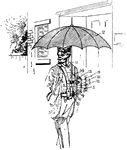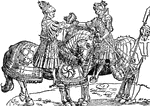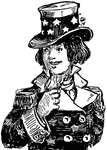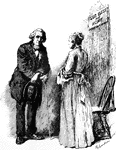The Complete Costumes ClipArt gallery offers 354 illustrations of men and women wearing outfits of various historical periods.
1190 Silhouette of Man
This 1190 Silhouette of man is a black outline that shows the fashion of men during that period. It…
1350 Silhouette of Man
This 1350 Silhouette of man is a black outline that shows the fashion of men during that period. The…

1525 Silhouette of Man
This 1525 Silhouette of man is a black outline that shows the fashion of men during that period. The…

1580 Silhouette of Man
This 1580 Silhouette of man is a black outline that shows the fashion of men during that period. The…

1640 Silhouette of Man
This 1640 Silhouette of man is a black outline that shows the fashion of men during that period. The…

1660 Silhouette of Man
This 1660 Silhouette of man is a black outline that shows the fashion of men during that period. The…
1723 Silhouette of Man
This 1725 Silhouette of man is a black outline that shows the fashion of men during that period. The…

Diving Suit
A weighted and hermetically sealed garment supplied with air; worn by underwater divers.
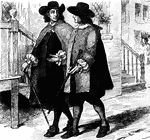
Men Talking and Walking
Old fashioned gentlemen walking down a road talking to each other. The both are wearing hats and carrying…

Theatrical Costume
One of the more prominent places people see costumes is in theater, film and on television. In combination…

Thor Wielding Mjölnir, Standing on a Cloud
The Norse god Thor flings his hammer, Mjölnir, over his head. He is standing on a cloud and his name…

Tophat
A top-hat is a kind of tall, flat-crowned, broad-brimmed hat worn by men throughout the 1800s and early…
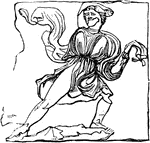
Tunica
"Tunica, an under-garment. Greek. The chiton was the only kind of under-garment, worn by the Greeks.…

Tunica
"Tunica, an under-garment. Greek. The chiton was the only kind of under-garment, worn by the Greeks.…

Tunica
"Tunica, an under-garment. Greek. The chiton was the only kind of under-garment, worn by the Greeks.…

Tunica
"Tunica, an under-garment. Roman. The Tunica of the Romans, like the Greek chiton, was a woollen under…

Two Attendants, or Lictors, of a King or Consul
Lictors were guards of magistrates who carried fasces to show power to execute. Two men, one young,…

Umbraculum
"Umbraculum, Umbella, a parasol, was used by Greek and Roman ladies as a protection against the sun.…

Viollet-le-Duc
"A complete dress, with the exception of sides and sleeves, in which case it was either made to fit…
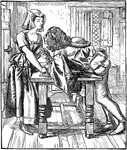
Once a Week
Once a Week is a pencil drawing by English artist Charles Keene in 1859. This drawing is part of a novel…
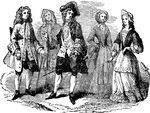
William III Costumes
This illustration shows the costumes that were worn during the ruling of King William III and Queen…

Late 19th Century Winter Dress
This late 19th century winter dress is designed with a cape that is worn over the dress and a scarf.…

Late 19th Century Winter Dress
This lady is wearing a late 19th century winter dress. She is also wearing a hat that includes a feather…

Late 19th Century Winter Dress
This is a Late 19th century winter dress. It includes a hat with a ribbon in the center.

Early 20th Century Winter Jacket
This is an early 20th century winter jacket. It is a fitted jacket that buttons at the waist.

Early 20th Century Winter Jacket
This is an early 20th century winter jacket. It has a high neck collar and long wide sleeves that are…

Early 20th Century Winter Jacket
This is an early 20th century winter jacket. It is a long jacket with a high collar, and wide sleeves.

Early 20th Century Winter Jacket
This is an early 20th century winter jacket. It is a knee length jacket with a large collar, and large…

A Woman in a Dress - 12th Century, with Long and Hanging Sleeves
"At different times during the middle ages extraordinarily long, pendant sleeves were in use, sometimes…

Zona
"Zona, also called cingulum, a girdle or zone, worn about the loins by both sexes. The chief use of…

Zuni Woman
A woman from the Indian tribe, Zuni in New Mexico. The Zuni are one of the Pueblo peoples. They are…








